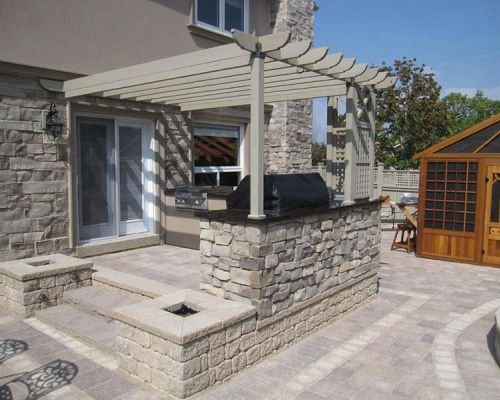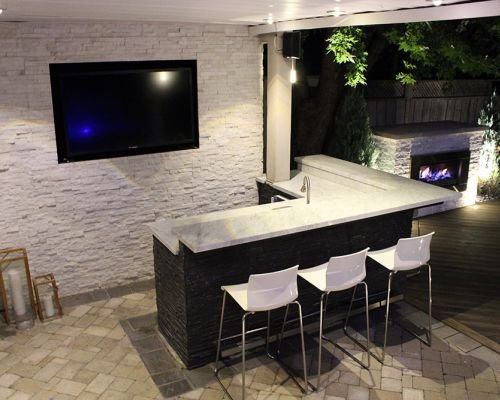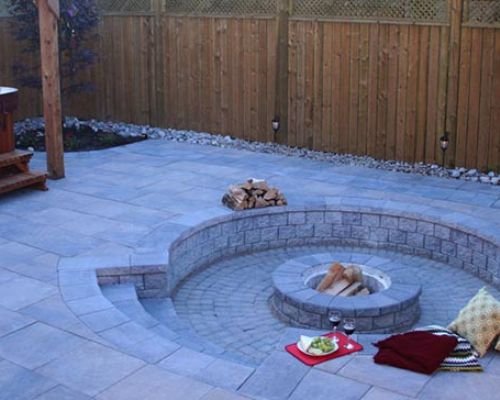Imagine transforming Toronto yards into vibrant, sustainable retreats that seamlessly blend beauty and ecological responsibility—sounds ideal, but how do homeowners achieve this delicate balance? This guide explores how thoughtful landscape design integrates native plants, eco-friendly materials, and stormwater management features to create resilient, low-impact outdoor spaces. It delves into practical applications, from soil assessment to installation, revealing how personalized, eco-conscious choices can elevate property value while supporting local ecosystems. As innovations like water-saving systems and regenerative planting evolve, the future of sustainable landscaping promises even more efficient, stylish solutions—yet, how can residents and designers stay ahead in this ever-changing field? These emerging trends highlight a shared goal: cultivating outdoor environments that are not only stunning and functional but also resilient, energy-efficient, and deeply aligned with Toronto’s environmental goals. When sustainability and style unite, outdoor spaces become more than just yards—they become thriving extensions of community and nature.
Transform Your Toronto Outdoor Space with Expert Landscape Design
Looking to elevate your outdoor living in Toronto? Toronto Landscape & Design (TLD) offers exceptional services including natural stone features, water gardens, irrigation systems, and retaining walls. Our award-winning designers take everything into consideration to craft a stunning and functional backyard makeover that perfectly suits your lifestyle and environment. Whether you’re seeking a serene water garden or durable retaining walls, TLD ensures quality craftsmanship and personalized solutions. Discover how our team can transform your outdoor space into a beautiful retreat. For consultations, contact mike@torontolandscapedesign.com or call 1.416.644.0499. Visit our website to learn more about our backyard makeover services and start your journey to a breathtaking landscape today.

Transform Toronto Yards into Eco-Friendly Retreats for a Greener Future
Transforming Toronto yards into sustainable outdoor retreats is more than just a trend—it’s a meaningful shift in how homeowners approach their outdoor spaces. As the city’s population grows denser, the desire for yards that are both beautiful and environmentally responsible becomes increasingly important. These spaces offer a private escape that boosts curb appeal and property value while actively supporting local ecosystems and reducing environmental impact.
Creating these sustainable retreats involves a thoughtful balance between aesthetics and ecology. It’s about designing yards that look inviting and are easy to maintain, all while minimizing their ecological footprint. Using native plants adapted to Toronto’s climate reduces the need for excessive watering, fertilizers, and pesticides. Incorporating eco-friendly materials and features like rain gardens or natural water management systems ensures resilience against seasonal weather changes and heavy rainfall, turning yards into low-impact environments that stand up to Toronto’s weather challenges.
The scope of sustainable landscaping extends beyond plant choices. It includes analyzing soil and drainage conditions, selecting appropriate native species, and integrating features such as permeable surfaces and stormwater management solutions. These elements not only improve the yard’s functionality but also contribute to a healthier environment by reducing runoff and erosion. Thoughtful design choices, like solar-powered lighting and recycled materials, further enhance both beauty and sustainability, creating outdoor spaces that feel natural and cohesive.
Designing a sustainable yard also means understanding the preferences and lifestyles of homeowners. Whether someone envisions a lush garden, a modern minimalist patio, or a cozy firepit area, integrating native plants and eco-conscious features can make every vision possible without sacrificing environmental goals. When these elements come together seamlessly, the result is a vibrant, manageable landscape that encourages ongoing care and fosters a sense of stewardship.
As Toronto’s landscape evolves, so does the importance of adopting sustainable practices. Green spaces help improve air quality, reduce urban heat, and support local wildlife—benefits that extend to everyone. By embracing eco-friendly principles, homeowners can create outdoor retreats that are not only beautiful and functional but also aligned with the city’s broader environmental goals.
Ultimately, transforming yards into sustainable retreats isn’t just about aesthetics; it’s about building resilient, eco-conscious environments that enhance quality of life. Thoughtful design and ongoing stewardship turn outdoor spaces into extensions of the home—places for relaxation, socializing, and connection with nature—while contributing to a healthier, more sustainable Toronto.
Foundations of Sustainable Landscape Design: Native Plants and Climate Considerations
Core principles of sustainable landscape design focus on creating outdoor spaces that are both visually appealing and environmentally responsible. At its heart, this approach emphasizes minimizing chemical use, conserving water, and selecting natural or recycled materials. These choices reduce the ecological footprint of a yard while supporting its long-term health and resilience.
Native plants are central to this philosophy. Adapted to Toronto’s climate, species such as serviceberry and black-eyed Susan require less watering, fertilizers, and pesticides. Incorporating them simplifies maintenance and boosts local biodiversity, fostering a healthier ecosystem within the yard. Designing with climate considerations in mind ensures landscapes can withstand seasonal shifts, heavy rains, and drought periods without extensive intervention.
Features like rain gardens and permeable paving serve dual purposes: they manage stormwater naturally and add visual interest. These elements help prevent runoff and erosion while integrating seamlessly into the overall design, creating harmony between beauty and function. Layered planting techniques, combining shrubs, flowers, and ground covers, further enhance ecological health and aesthetic appeal by promoting biodiversity and natural pest control.
Using natural materials such as reclaimed stone, recycled wood, and biodegradable composites adds durability and texture, reducing reliance on new resources. These materials not only support sustainability but also lend warmth and character to outdoor spaces, making them inviting and durable. Understanding homeowner preferences is key to this process; whether envisioning lush gardens or sleek modern patios, native plants and eco-friendly features are tailored to reflect individual style while maintaining ecological integrity.
Resource efficiency remains a cornerstone of sustainable design. Employing drought-resistant native plants, smart irrigation systems, and organic fertilizing methods ensures that landscapes stay vibrant with minimal resource use. These practices encourage ongoing stewardship, helping yards remain resilient and low-impact over time. Thoughtfully integrating these principles results in outdoor environments that are beautiful, manageable, and in tune with Toronto’s climate and community values.

Harmonizing Beauty and Ecology: Overcoming Challenges in Sustainable Landscaping
Balancing aesthetic appeal with environmental responsibility in landscape design can feel like walking a tightrope. Homeowners want lush, inviting yards that reflect their personal style, but they also aim to minimize their ecological footprint. The key is to find creative solutions that satisfy both needs without sacrificing one for the other. For example, native plants can deliver vibrant, colorful gardens that require less water and fewer chemicals, making them both beautiful and eco-friendly. These plants are naturally suited to Toronto’s climate, thriving with minimal intervention and reducing maintenance demands.
Thoughtful planning is essential to achieve harmony between beauty and sustainability. Features like rain gardens and permeable paving serve dual roles—they add visual interest and naturally manage stormwater. When integrated seamlessly into the landscape, these elements create a cohesive design where ecological benefits enhance aesthetic appeal, rather than feeling like compromises. Skillful layering of textures, colors, and plant varieties can transform a yard into a lively, engaging space that balances visual vibrancy with ecological resilience.
One of the biggest hurdles is overcoming the misconception that eco-friendly choices limit design options. Relying solely on native plants might seem restrictive, but clever use of contrast, layering, and focal points can produce dynamic, lively landscapes. Natural materials like reclaimed stone or wood not only support sustainability but also add warmth and texture, elevating the overall style. When these elements are thoughtfully incorporated, they elevate the entire design, demonstrating that sustainability and beauty can coexist without compromise.
Maintaining this balance over time depends on ongoing care and homeowner awareness. Practices like seasonal pruning, organic fertilizing, and mulching support plant health naturally, reducing reliance on chemicals. Educating clients about these methods encourages ongoing stewardship, ensuring the landscape remains vibrant and resilient. When homeowners understand how their choices impact the environment, they are more motivated to care for their yards responsibly, preserving both their beauty and ecological integrity.
The goal is to create outdoor spaces where aesthetic and environmental goals support each other seamlessly. Thoughtful integration of native plants, natural features, and eco-friendly materials results in landscapes that are visually stunning, low-impact, and resilient. This harmony transforms yards into more than just outdoor spaces—they become reflections of a commitment to sustainability and personal expression. When design and ecology come together, yards become enduring, beautiful retreats that serve their owners and the environment alike.
Bringing Eco-Conscious Design to Life in Toronto Homes
In Toronto residential landscapes, sustainable design principles are brought to life through careful, site-specific planning. Designers begin by thoroughly assessing soil conditions, sunlight patterns, and drainage issues to select native plants that naturally thrive in our climate. This initial step ensures the yard’s plant choices require minimal watering and chemical support, setting the stage for a resilient, low-maintenance landscape.
Seamless integration of eco-friendly features is key to practical application. Rain gardens are a popular addition, designed not only to manage stormwater effectively but also to serve as focal points with native plants that handle both drought and heavy rain. Reclaimed materials like stone and wood are frequently used for pathways and borders, reducing environmental impact while adding warmth and texture to the space.
Functional outdoor spaces such as seating areas, firepits, or outdoor kitchens are tailored to each homeowner’s lifestyle, with eco-conscious lighting and water features enhancing both beauty and energy efficiency. Solar-powered lights highlight pathways and gathering spots without increasing energy use, creating inviting environments that blend style with sustainability.
Throughout each project, collaboration with homeowners ensures that their personal style and specific needs are reflected. Whether it’s a lush garden for family gatherings or a sleek modern patio, native plants and eco-friendly features are adapted accordingly. This personalized approach results in a landscape that feels cohesive, vibrant, and easy to care for over time.
Installation is only the beginning. Regular maintenance practices like seasonal pruning, organic fertilizing, and mulching support plant health naturally. Educating homeowners on these methods encourages ongoing stewardship, helping their yards remain resilient and beautiful across seasons. This ongoing care ensures that eco-friendly features continue to function effectively and that the landscape retains its visual appeal.
Attention to detail during installation guarantees that every element works harmoniously. The use of sustainable materials and precise placement ensures that the design remains functional and visually appealing. This thoughtful execution prevents common pitfalls and preserves the integrity of the original vision.
The result is a yard that balances aesthetics with environmental responsibility, creating an outdoor retreat that’s both inviting and sustainable. Each project illustrates how eco-conscious choices can be integrated seamlessly into everyday living spaces, reinforcing the importance of thoughtful design and ongoing care.
By applying these principles practically, Toronto homeowners enjoy landscapes that are not only beautiful but also resilient and low-impact. These spaces become extensions of the home, supporting local ecosystems while reflecting personal style. This approach demonstrates that sustainability and client satisfaction go hand in hand when design is executed with purpose and care.

Innovating for Tomorrow: Future Trends in Sustainable Landscaping
As sustainable landscaping continues to evolve, innovative technologies and forward-thinking practices are shaping the future of eco-friendly outdoor design in Toronto. Water-saving irrigation systems, such as smart drip networks and rain sensors, are making maintenance more efficient while reducing water waste. These tools help ensure plants receive exactly what they need, even during dry spells, supporting healthier growth with less resource consumption. Meanwhile, drought-resistant native plants and regenerative planting techniques are gaining popularity, helping restore soil health and boost biodiversity—creating resilient ecosystems that thrive naturally with minimal intervention.
Advances in materials also influence outdoor spaces. Recycled plastics, biodegradable composites, and natural building materials are increasingly used in furniture, pathways, and structures, cutting down environmental impact while offering durability and style. Solar-powered lighting and natural water management features, like rain gardens and recirculating streams, turn yards into energy-efficient retreats that blend seamlessly with the landscape. These eco-conscious features not only heighten visual appeal but also contribute to lowering the carbon footprint and supporting local wildlife.
Looking ahead, the integration of artificial intelligence and data-driven landscape management promises to revolutionize outdoor design. Smart sensors and landscape software enable homeowners and designers to monitor soil moisture, plant health, and energy use in real time. This precision allows for highly personalized, adaptive outdoor environments that automatically respond to seasonal changes and weather fluctuations. Such innovations make sustainable landscaping more accessible and manageable, encouraging ongoing care and environmental stewardship.
These emerging trends underscore the importance of balancing beauty with ecological responsibility. Stylish yards should inspire and delight, but they must also support the environment through native plants, resource conservation, and minimal chemical inputs. The latest innovations provide durable, eco-friendly options that make it easier for homeowners to embrace sustainability without sacrificing style or functionality.
For Toronto residents and landscape professionals alike, adopting these forward-looking practices offers the opportunity to craft outdoor spaces that are not only visually stunning but also resilient and environmentally sound. By prioritizing native plants, installing water-efficient systems, and choosing sustainable materials, they can develop retreats that stand the test of time. Staying informed about new technologies and methods ensures these outdoor spaces remain vibrant, functional, and aligned with broader environmental goals for years to come.
The future of sustainable landscaping lies in continuous innovation and thoughtful application. As technology advances, so does the potential to create outdoor environments that are both beautiful and low-impact. The goal remains clear: design outdoor retreats that inspire, nurture ecosystems, and endure. When homeowners and designers work together to incorporate these innovations, they help shape a greener, healthier Toronto—one yard at a time.
Embracing these trends and innovations not only enhances personal outdoor spaces but also contributes to broader environmental health. Increasingly, homeowners recognize that eco-conscious choices support their well-being and that of the city. As more residents integrate sustainable practices into their landscaping, the collective impact strengthens, fostering a more resilient, vibrant urban landscape.
By continually exploring new ideas and refining existing ones, Toronto’s outdoor spaces will reflect a deep commitment to sustainability. These efforts support local ecosystems, reduce resource consumption, and promote long-term resilience. The journey toward greener, more sustainable yards is ongoing, driven by innovation, awareness, and a shared respect for our environment. Each thoughtfully designed space becomes a step toward a healthier city and a more sustainable future.